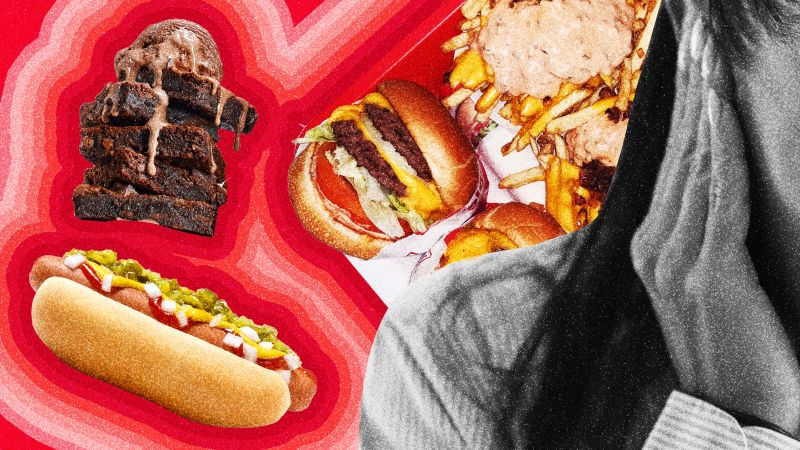The journey toward achieving a healthier relationship with food is incredibly diverse and often fraught with challenges. For Savannah Mendoza, a 27-year-old from Huntington Beach, California, the narrative of her life shifted dramatically after beginning medication for weight loss and diabetes, specifically through a popular drug known as tirzepatide. Previously entrenched in a cycle of compulsive eating, often resorting to food delivery apps and drive-thru meals, Mendoza discovered a profound change in her mentality towards food. She described her previous obsession as “food noise,” an incessant internal chatter that incessantly pushed her toward eating, even when she wasn’t physically hungry.
Food noise is a term that has garnered attention in recent discussions surrounding dietary health, particularly among individuals using weight-loss medications. According to Mendoza, this relentless questioning and fixation around eating felt overwhelming and ugly, preventing her from making healthy nutritional choices. Following the initiation of tirzepatide, she found relief from the compulsive choice-making about food, attributing this peace not only to a psychological shift but also as a side effect of the medication.
The mechanism behind tirzepatide, along with another medication known as semaglutide, is binding to glucagon-like peptide-1 (GLP-1) receptors in the body. These medications signal to the body that it has consumed enough food, thereby reducing appetite and stabilizing blood sugar levels. They are well-known for their effectiveness in treating type 2 diabetes and have been repurposed to assist in weight loss. Many individuals, including Mendoza, have reported feeling less hunger and food-related anxiety once they began their prescriptions.
Summer Kessel, a registered dietitian from Tampa, Florida, echoed Mendoza’s sentiments after two years on tirzepatide. Kessel described her previous experiences with food as being akin to a “bottomless pit,” where thoughts of food consumed her mind incessantly. The medication offered her respite; after her first injection, the overwhelming thoughts surrounding meal planning and calorie counting quieted, allowing her to engage with life outside of food-focused contemplation. She emphasized the newfound ability to have balanced meals without the chaotic mental roadmap mapping out her next food fixation.
Dr. Michael Lowe, a professor of psychology at Drexel University, provides scientific underpinning to the discussion of food noise. His theory of hedonic hunger suggests that many individuals crave food not out of physical necessity but rather for sensory pleasure, which can be exacerbated by environmental factors such as advertising and food accessibility. This theory aligns closely with the experiences reported by individuals like Mendoza and Kessel who are utilizing GLP-1 medications and whose food cravings seem more manageable now.
As the dialogue surrounding food noise evolves, researchers are discovering that it isn’t merely a product of personal craving but also a reflection of systemic issues within societal norms around food consumption. Jackson LeMay, a 27-year-old from Lilburn, Georgia, shared his struggle with food noise as a persistent itch that emerged during high school, causing him to feel compelled to eat in secret and hide food. After successfully losing 155 pounds through a combination of diet, lifestyle changes, and Mounjaro (also a GLP-1 medication), LeMay felt a significant shift in his relationship with food, no longer defined by an incessant obsession.
Experts like Dr. Najaf Asrar note that food noise often reflects societal stimuli that promote unhealthy eating habits. These loud signals can overshadow the body’s legitimate hunger and fullness cues, complicating an individual’s ability to differentiate between emotional and physical hunger. While medications like Zepbound and Wegovy target the physiological mechanisms contributing to obesity, they may not universally neutralize the cognitive aspects associated with food noise for everyone.
Overarching this discourse is the recognition that medications like GLP-1s represent only one facet of potential solutions available for managing food noise. Dr. Tom Hildebrandt, director of the Center of Excellence in Eating and Weight Disorders, emphasized a comprehensive treatment approach that includes cognitive behavioral therapy to reshape the relationship individuals have with food in a nurturing and self-regulating manner.
While promising, the journey isn’t devoid of hurdles. Individuals on these medications might grapple with new anxieties around food, where the fear of feeling discomfort from certain foods could replace previous obsessions. Nonetheless, many users, like Kessel, declare that the profound mental reprieve achieved from their medication—despite remaining cognizant of its limitations—significantly enhances their quality of life.
Ultimately, the narratives of Mendoza, Kessel, LeMay, and others underscore a critical movement toward understanding and addressing the complexities of our relationships with food. As the dialogue continues to unfold, it sheds light on the multifaceted nature of appetite, behavior, and the environmental influences that mold our eating habits, guiding individuals towards a healthier and more balanced approach to nourishment.












